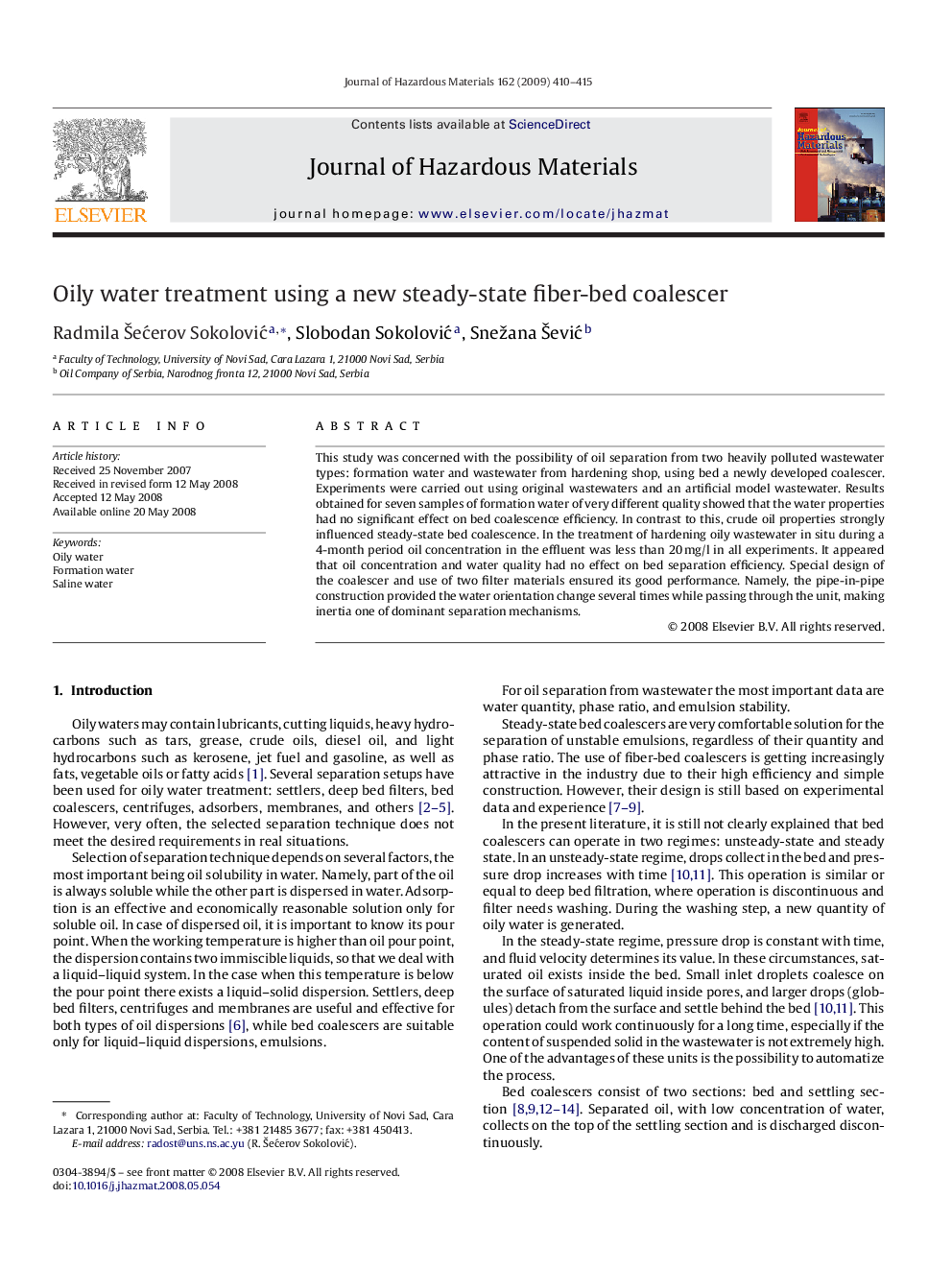| Article ID | Journal | Published Year | Pages | File Type |
|---|---|---|---|---|
| 582591 | Journal of Hazardous Materials | 2009 | 6 Pages |
Abstract
This study was concerned with the possibility of oil separation from two heavily polluted wastewater types: formation water and wastewater from hardening shop, using bed a newly developed coalescer. Experiments were carried out using original wastewaters and an artificial model wastewater. Results obtained for seven samples of formation water of very different quality showed that the water properties had no significant effect on bed coalescence efficiency. In contrast to this, crude oil properties strongly influenced steady-state bed coalescence. In the treatment of hardening oily wastewater in situ during a 4-month period oil concentration in the effluent was less than 20Â mg/l in all experiments. It appeared that oil concentration and water quality had no effect on bed separation efficiency. Special design of the coalescer and use of two filter materials ensured its good performance. Namely, the pipe-in-pipe construction provided the water orientation change several times while passing through the unit, making inertia one of dominant separation mechanisms.
Related Topics
Physical Sciences and Engineering
Chemical Engineering
Chemical Health and Safety
Authors
Radmila Å eÄerov SokoloviÄ, Slobodan SokoloviÄ, Snežana Å eviÄ,
